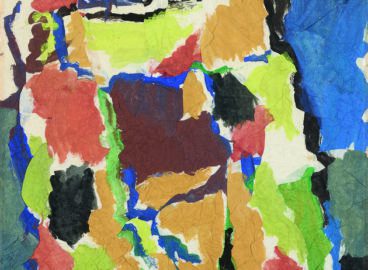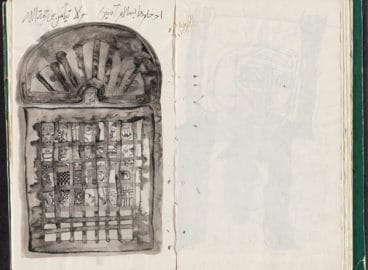Anneka Lenssen
Anneka Lenssen specializes in modern painting and contemporary visual practices, with a focus on the cultural politics of the Middle East. She teaches courses engaging with modern art and international mass culture, abstraction and aniconism, global histories of Surrealism and other transnationally conceived movements, translational practices, and historiography as well as special topic courses on Islamic art and visual culture.
Lenssen’s research examines problems of artistic representation in relation to the globalizing imaginaries of empire, nationalism, communism, decolonization, non-alignment, and Third World humanism. Her current book project, Beautiful Agitation: Modern Painting and Politics in Syria (UC Press, forthcoming 2020), is a study of avant-garde painting and the making of Syria as a contested territory, 1900 to 1965. It traces emerging ideas about artistic form and vitalist social activation within new regimes of political representation, from French Mandate rule after the first war to the mass mobilizations of youth-oriented ideological parties to Cold War cultural diplomacy. This work has been supported by a Hellman Faculty Fellow award (2017-2018), and a postdoctoral fellowship at the Getty Research Institute in Los Angeles (theme “Art and Anthropology,” 2016-2017).
Lenssen is co-editor, with colleagues Nada Shabout and Sarah Rogers, of a volume of art writing from the Arab world in translation: Modern Art in the Arab World: Primary Documents, published by the Museum of Modern Art, New York, 2018. She has published articles in Afterall, ARTMargins, Muqarnas, Representations, and Third Text, and contributed essays and reviews to Artforum, Bidoun, and Springerin, as well as exhibition catalogs for Darat al-Funun in Amman, Haus der Kunst in Munich, and and the Sharjah Biennial.
She is currently on the Editorial Board of ARTMargins and is a faculty affiliate of Berkeley’s Center for Middle Eastern Studies.
Before coming to Berkeley, Lenssen taught at The American University in Cairo, where she directed the Visual Cultures Program (2013-2014). She also served on the board for the Association of Modern and Contemporary Art from the Arab World, Iran, and Turkey (AMCA), 2010-2012. She earned her PhD from the Massachusetts Institute of Technology in the History, Theory, and Criticism of Architecture and Art program and the Aga Khan Program for Islamic Architecture.
Contributions



